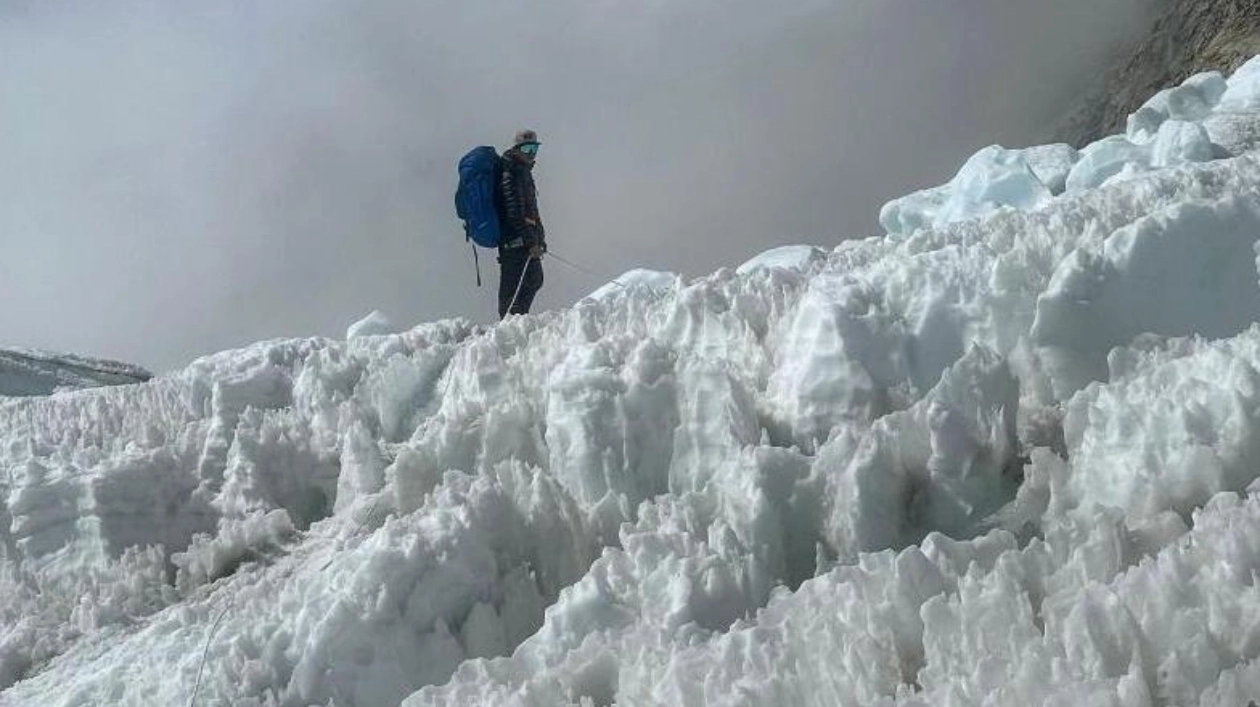On the sacred slopes of Everest, climate change is causing the snow and ice to thin, increasingly revealing the bodies of hundreds of climbers who perished while pursuing their dream of reaching the summit of the world's tallest mountain. This year, a team ascended the towering Himalayas not to reach the 8,849-meter (29,032-foot) peak, but to risk their lives in order to recover some of the deceased. Five frozen bodies, including one that was merely skeletal, were retrieved as part of Nepal's mountain cleanup campaign on Everest and neighboring peaks Lhotse and Nuptse. This task is grim, arduous, and perilous. Rescuers spent hours chipping away at the ice with axes, sometimes resorting to boiling water to loosen its grip. 'Due to the effects of global warming, the bodies and trash are becoming more visible as the snow cover diminishes,' explained Major Aditya Karki of the Nepalese army, who led the team of 12 military personnel and 18 climbers. Over 300 people have died on the mountain since the 1920s, with eight fatalities this season alone. Many bodies remain, some hidden by snow or fallen into deep crevasses, while others, still in their vibrant climbing gear, have become landmarks on the ascent. Nicknames like 'Green Boots' and 'Sleeping Beauty' have emerged. 'There is a psychological impact,' Karki told AFP. 'People believe they are entering a divine space when they climb, but encountering dead bodies can have a negative effect.' Many bodies are within the 'death zone,' where thin air and low oxygen levels increase the risk of altitude sickness. Climbers are required to have insurance, but any rescue or recovery mission is fraught with danger. One body, encased in ice up to its torso, took the climbers 11 hours to free. The team had to use hot water to loosen it, prying it out with their axes. 'It is extremely difficult,' said Tshiring Jangbu Sherpa, who led the body retrieval expedition. 'Extracting the body is one challenge, bringing it down is another.' Sherpa noted that some bodies appeared almost as they were at the moment of death, fully equipped with crampons and harnesses. One body seemed untouched, missing only a glove. The retrieval of corpses at high altitudes is controversial in the climbing community, costing thousands of dollars and requiring up to eight rescuers per body. A body can weigh over 100 kilograms (220 pounds), and at high altitudes, carrying heavy loads is severely compromised. However, Karki emphasized the necessity of the rescue efforts. 'We must bring them back as much as possible; if we continue to leave them, our mountains will become a graveyard.' Bodies are often wrapped in bags and placed on plastic sleds to be dragged down. Sherpa recounted that bringing one body down from near Lhotse's 8,516-meter peak was among the hardest challenges. 'The body was frozen with limbs spread,' he said. 'We had to carry it down to Camp Three as it was, and only then could it be moved to a sled.' Rakesh Gurung from Nepal's tourism department stated that two bodies had been preliminarily identified, with authorities awaiting 'detailed tests' for final confirmation. The retrieved bodies are now in Kathmandu, and those not identified are likely to be cremated. Despite the recovery efforts, the mountain still holds its secrets. The body of George Mallory, the British climber who disappeared during a 1924 summit attempt, was only found in 1999. His climbing partner, Andrew Irvine, and their camera, which could provide evidence of a successful summit and rewrite mountaineering history, have never been found. The cleanup campaign, with a budget exceeding $600,000, also employed 171 Nepali guides and porters to return 11 tonnes of rubbish. Fluorescent tents, discarded climbing equipment, empty gas canisters, and human waste litter the popular route to the summit. 'The mountains have provided mountaineers with so many opportunities,' Sherpa said. 'We must give back by removing the trash and bodies to clean the mountains.' Today, expeditions are pressured to remove their waste, but historic rubbish remains. 'This year's trash might be brought back by the mountaineers,' Karki noted. 'But who will bring the old ones?'

Text: Lara Palmer
27.06.2024
Nepalese Teams Risk Lives to Retrieve Bodies Exposed by Melting Ice





